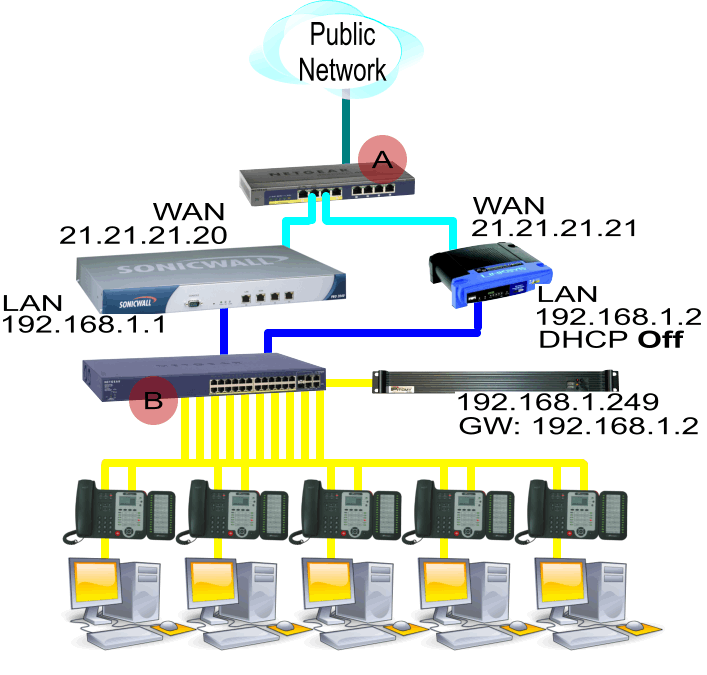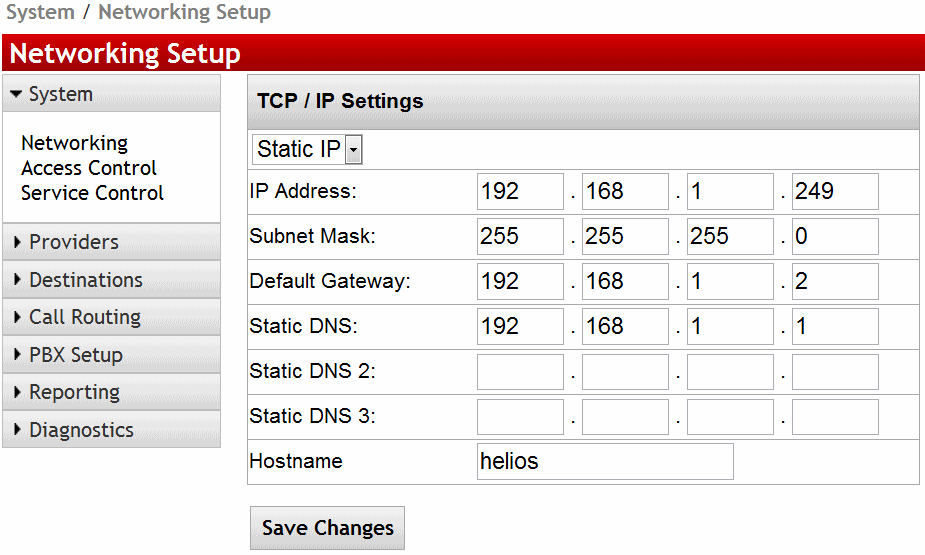Difference between revisions of "Router Bypass"
Drew Harrell (talk | contribs) |
Drew Harrell (talk | contribs) |
||
| Line 1: | Line 1: | ||
| − | {{DISPLAYTITLE: Router Bypass}} | + | {{DISPLAYTITLE: Router Bypass}} [[Category: Router Configuration]] |
Routers can impose many performance issues. For this reason we have devised a test plan that will help you to isolate the cause of your issue. Since Sonicwall routers are often found to be the cause of the issue it is the brand we have chosen to display. There are however many other routers which like the Sonicwall first stop all traffic and are then programmed to incrementally open access as features/services are needed. This methodology imposes tight security AND potential barriers for intended applications. | Routers can impose many performance issues. For this reason we have devised a test plan that will help you to isolate the cause of your issue. Since Sonicwall routers are often found to be the cause of the issue it is the brand we have chosen to display. There are however many other routers which like the Sonicwall first stop all traffic and are then programmed to incrementally open access as features/services are needed. This methodology imposes tight security AND potential barriers for intended applications. | ||
Revision as of 21:06, 24 April 2013
Routers can impose many performance issues. For this reason we have devised a test plan that will help you to isolate the cause of your issue. Since Sonicwall routers are often found to be the cause of the issue it is the brand we have chosen to display. There are however many other routers which like the Sonicwall first stop all traffic and are then programmed to incrementally open access as features/services are needed. This methodology imposes tight security AND potential barriers for intended applications.
- Connection problems
- One-way audio
- No audio
These problems are usually network related.
Simple tests to assure that the problem isn't an analog issue:
- Test the handset compared to the speakerphone... does one work and not the other?
- Changeout the handset with a known working handset...
- If you have analog trunks (connected via gateway), test them. ALL of them. Find out what to test at:
- http://www.sandman.com/trou-bul.html
- http://www.sandman.com/loopcur.html
- NOTE: Some issues only manifest when you test trunks in combination.
Routers are not involved in the call path if you have a local analog gateway, so you can eliminate the router as the source of the issue if all your traffic is local. One way to eliminate any potential internet traffic as the source of your issue would be to temporarily disconnect the WAN port of your router. Note this can cause other issues, such as excessive traffic as clients using the internet that are located on the LAN attempt to reconnect repeatedly. Another remote possibility is that the router is designed to filter even LAN traffic. If this is the case it's a good idea to have a spare router to hook up temporarily so you can eliminate the router as the source of any problems.
If it's not an analog problem the chances are good it is the network, now you have to determine which network segment is the problem.
Network testing:
- Call one telephone to another on the same local network
- If a problem exists here, your problem is the LAN and you must isolate the issue
- If no problem exists between telephones on the same network, continue testing over the WAN
- WAN connection involve either SIP Trunks or Remote Phones, if your issue can be isolated to WAN devices/services you should:
- Perform a Trace Route from the PBX to the remote device/service
- If no problems are seen in the hops and multiple trace route tests return good results, your problem is likely your router.
To isolate your issue BYPASS the "main" router and utilize a second router as the WAN interface for voice traffic. You should have the following test equipment available for this test:
- DD-WRT Router
- Data Switch (preferably managed)
The topology of this network configuration is:
Notes:
- Most of the left-hand side of the diagram is the network as it is typically deployed. (It shows a Sonicwall router - which we often find to be the culprit of issues.)
- The DD-WRT router (seen in the Linksys shell) is installed in parallel with the Sonicwall.
- The test switch is placed in "front" of each router on the WAN interface. ("A" in the pic above)
- The BYPASS router (DD-WRT) DHCP server MUST be OFF!
- It is necessary to have two IP Addresses form the provider.
- Each router is assigned a WAN IP Address from the provider. (For illustration ours are: 21.21.21.20 and 21.21.21.21)
- Each router is assigned it's own unique Static IP Address on the LAN interface (we used 192.168.1.1 for the Sonicwall and 192.168.1.2 for the DD-WRT).
- The DD-WRT port forwarding must be set to accommodate voice traffic. (See: Port Forwarding)
- In the PBX set the Network Gateway to the Static IP of the LAN interface of the DD-WRT router. (see pic below)
- Your PBX may have a different IP Address (depends on your subnet)
- If so, match the Subnet in the test router
- When your testing is complete remember to set the PBX Gateway back to the "main" router (unless you decide to leave it in place).
When these settings are tested you will likely find that your WAN connection issues cease. The options from this point are to resolve the traffic filtering that is occurring in the "main" router. Or leave the DD-WRT in place and allow the operation of voice over IP to function well.
If you need help with this test setup please open a ticket in the IPitomy Ticket system so that we can properly track your issue... http://ticket.ipitomy.com/

